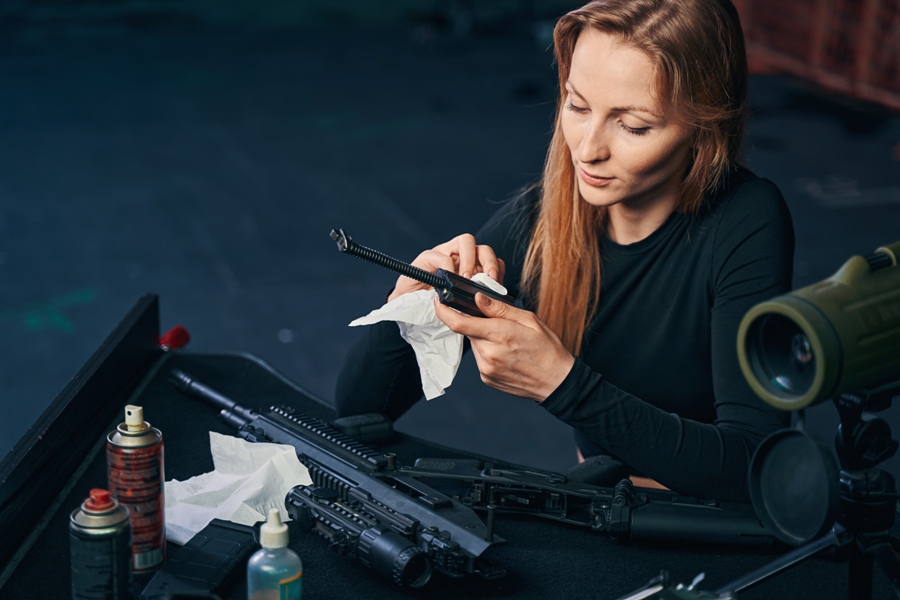As an Amazon Associate we earn from qualifying purchases.
CLP stands for Clean, Lubricate, Protect, and is many a gun owners’ go-to gun cleaner. While thousands of gun owners stand by these products, new gun owners don’t know how to use CLP gun cleaner.
Here’s a brief guide to help if you’re one of them.
Contents
How to Use CLP Gun Cleaner
Apply CLP to the bore and clean using swabs and a bore brush. Clean the lower receiver group using a cleaning brush and rags.
Next, clean the bolt carrier group with the help of brushes, pipe cleaners, and rags. Wipe all non-rubber-coated parts using CLP on a wet rag, then dry all parts and lubricate. Cycle all components by hand to spread the product.
It’s best to have:
- swabs
- a bore brush
- rags
- brushes handy (besides CLP, of course) to remove the dirt, corrosion, and powder fouling from all areas
Ensure you’re as thorough as possible and get the gunk out from all the nooks of your firearm.

How to Lubricate a Firearm After Cleaning With CLP
Begin by lightly lubing the inside of the upper receiver. Make sure you lube all parts, including the outer surfaces of the front sight and the barrel. It is best practice to also lube the mating surface for the carrying handle.
Next, move on to lubing the entirety of the bolt carrier group. Use lube generously on the body, rings, and cam pin area.
Finally, lube up the buffer, action spring, and the lower receiver extension internally and externally. Lube the buttstock assembly from the inside lightly, and use lube generously on the buttstock’s retaining pin and lock-release lever.
When Should You Use CLP Gun Cleaner?
It is best to clean all parts of a weapon with CLP right after firing. Using bore cleaning patches or a cotton rag is recommended. Next, clean the receiver by applying CLP on a receiver brush.
After wiping the firearm dry, rubbing a thin coat of CLP on the exposed metal of the piece with the help of a cloth is the best way to lubricate and preserve its exterior in all temperatures.
If you don’t use the firearm often, it’s best to perform cleaning and preventative maintenance every 90 days. Bear in mind that using CLP or lubricant on the weapon does not eliminate the need for regular inspection and cleaning since corrosion can begin forming unexpectedly.
How to Maintain a Firearm With CLP (According to Weather Conditions)
Applying a light coat of lubricating oil in arctic weather prevents the weapon from freezing up. Using CLP instead of lubricating oil in those conditions may give different results.
In extreme heat, a light coating of CLP helps prolong the life of a weapon. Cleaning and applying CLP frequently is a must in humid and sandy places.
Conclusion
There are no hard and fast rules to cleaning a piece with CLP. You can apply it generously on your weapon and go at it with brushes, rags, and other cleaning tools. However, cleaning the upper receiver group first, lower receiver group next, and bolt carrier group last is a more sophisticated way to go about it.
